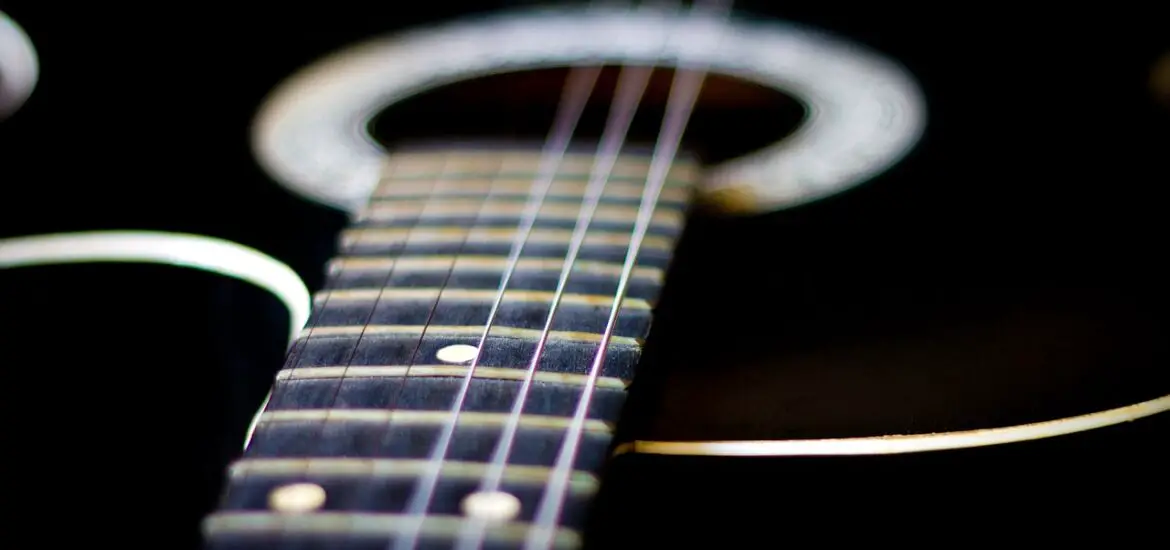Are you wondering, “why are the strings on my guitar so high?”. Elevated string height can not only disrupt your playing but also cause unnecessary strain on your fingers. This article aims to provide you with straightforward, step-by-step instructions to diagnose and fix this common issue.

Why Are the Strings on My Guitar So High? – Understanding Possible the Causes
When you notice that the strings on your guitar are unusually high, it’s natural to want a quick fix. However, the solution often depends on the specific cause, and there could be multiple factors at play. These can range from issues with the neck relief of the guitar to problems with the saddle height or even the depth of the nut slots.
By identifying the root cause, you’ll be better equipped to resolve the issue effectively and perhaps learn something new about your instrument along the way.
Check the Neck Relief
The neck relief, or the slight curvature of the neck, can play a crucial role in the height of your guitar strings. A neck that is too flat or overly bowed can lead to strings that are either too close or too far from the fretboard, respectively.
How to Check Neck Relief
To properly check the neck relief, you’ll need two specific tools: a capo and a feeler gauge. The capo is used to bar the strings at the first fret, eliminating the nut’s role from the equation. The feeler gauge, on the other hand, helps you measure tiny gaps with precision.
Place the Capo: Secure a capo on the first fret of your guitar. Make sure it’s tight enough to hold down all six strings.
Press Down the Low E String: Locate the fret where the guitar neck meets the body—usually the 14th or 17th fret depending on the guitar. Use one hand to press down the low E string at this fret.
Use the Feeler Gauge: Insert the feeler gauge at the 7th fret, between the fret and the bottom of the low E string. The gap should ideally be around 0.010 inches, although some players prefer a slightly different setup.
If the gap is significantly larger or smaller, it’s an indication that the neck relief needs to be adjusted.
Read more guitar topics here – Guitar Questions: Get the Right Answers to Your Burning Questions
Adjust the Truss Rod
If your neck relief is off, the next step is to adjust the truss rod—a metal rod inside the guitar neck that controls its curvature.
How to Adjust the Truss Rod
Locate the Truss Rod Nut: This is usually at the headstock of the guitar, under a small cover that you can remove with a screwdriver, or at the other end of the neck, accessible through the soundhole in some acoustic models.
Choose the Right Hex Wrench: The truss rod is adjusted using a specific-sized hex wrench. Make sure you use the correct size to avoid stripping the nut.
Make the Adjustment: To lower the strings (reduce the bow), turn the hex wrench clockwise. To raise them (increase the bow), turn it counter-clockwise. Always make minor adjustments—a quarter turn at a time is usually sufficient.
Recheck the Neck Relief: After each adjustment, it’s crucial to recheck the neck relief using the capo and feeler gauge method outlined earlier. This ensures that you haven’t overadjusted, preventing potential damage to your guitar.
Examine the Saddle Height
Your saddle height also has a direct influence on your string height.
How to Adjust the Saddle Height
Locate the Saddles: In electric guitars, these are usually individual pieces for each string, located at the bridge. Acoustic guitars typically have a single saddle.
Adjust the Height: Using a small screwdriver or hex wrench, turn the height adjustment screw clockwise to lower the string or counter-clockwise to raise it. Some acoustic saddles may require you to remove and sand the saddle down manually for a height reduction.
Check the Nut Slots
Finally, the height of the strings at the nut can also influence your playability.
How to Check the Nut Slots
Inspect the Nut: Look closely at the nut near the headstock. Each string sits in a slot.
Measure the Height: The string should not sit too high in its slot. About half of the string diameter should be above the top surface of the nut.
Consider Professional Help: Adjusting the nut slots is a delicate operation. If they’re too shallow, making them deeper is best done by a professional to avoid irreversible errors.
If you’ve gone through all these steps meticulously and still experience problems with high string height, it’s advisable to consult a professional luthier for a comprehensive setup.
Conclusion: Why Are the Strings on My Guitar So High?
Addressing the issue of high guitar strings can initially seem daunting, especially if you’re unsure of the cause. However, by systematically evaluating and adjusting key elements like the neck relief, truss rod, saddle height, and nut slots, you can make your instrument more comfortable to play and improve its performance.
